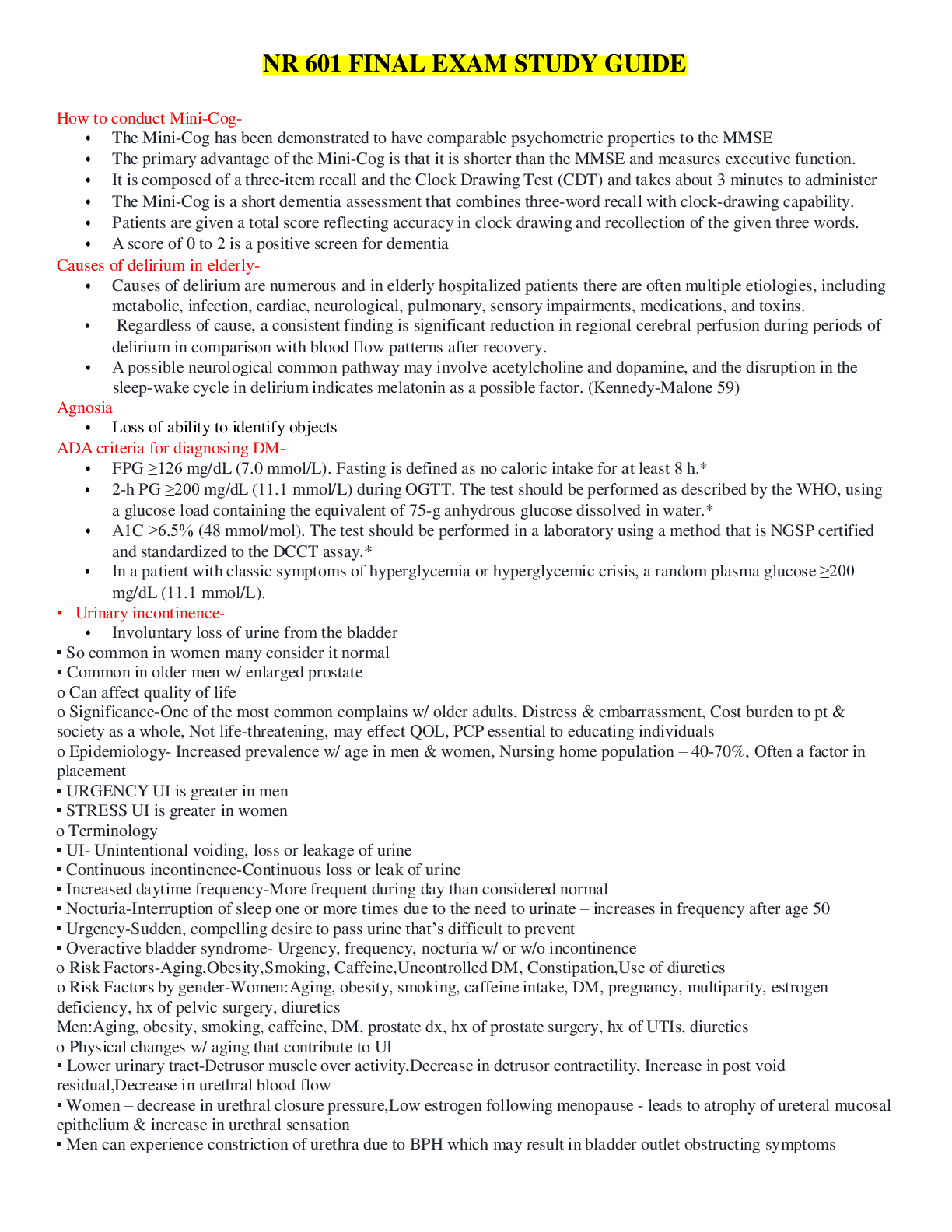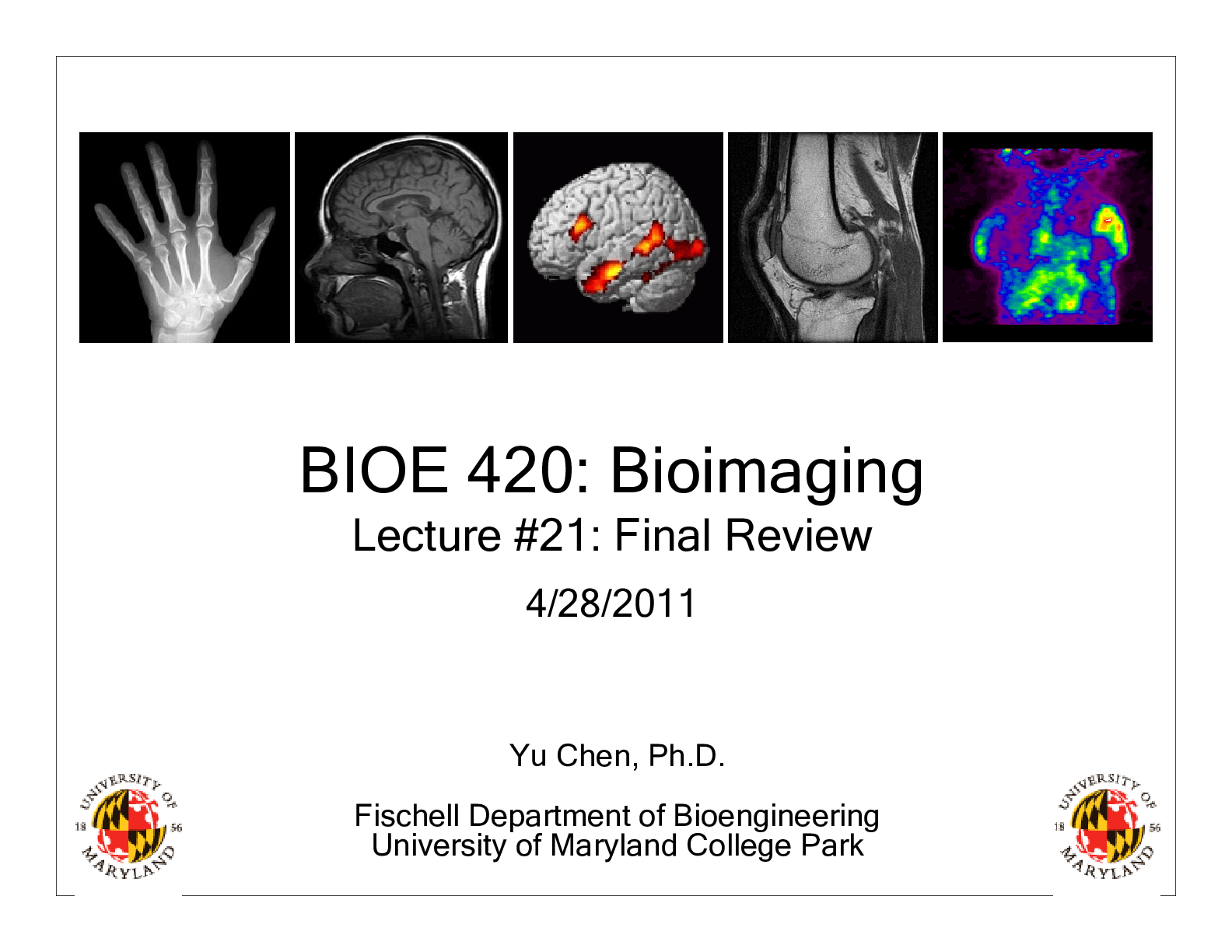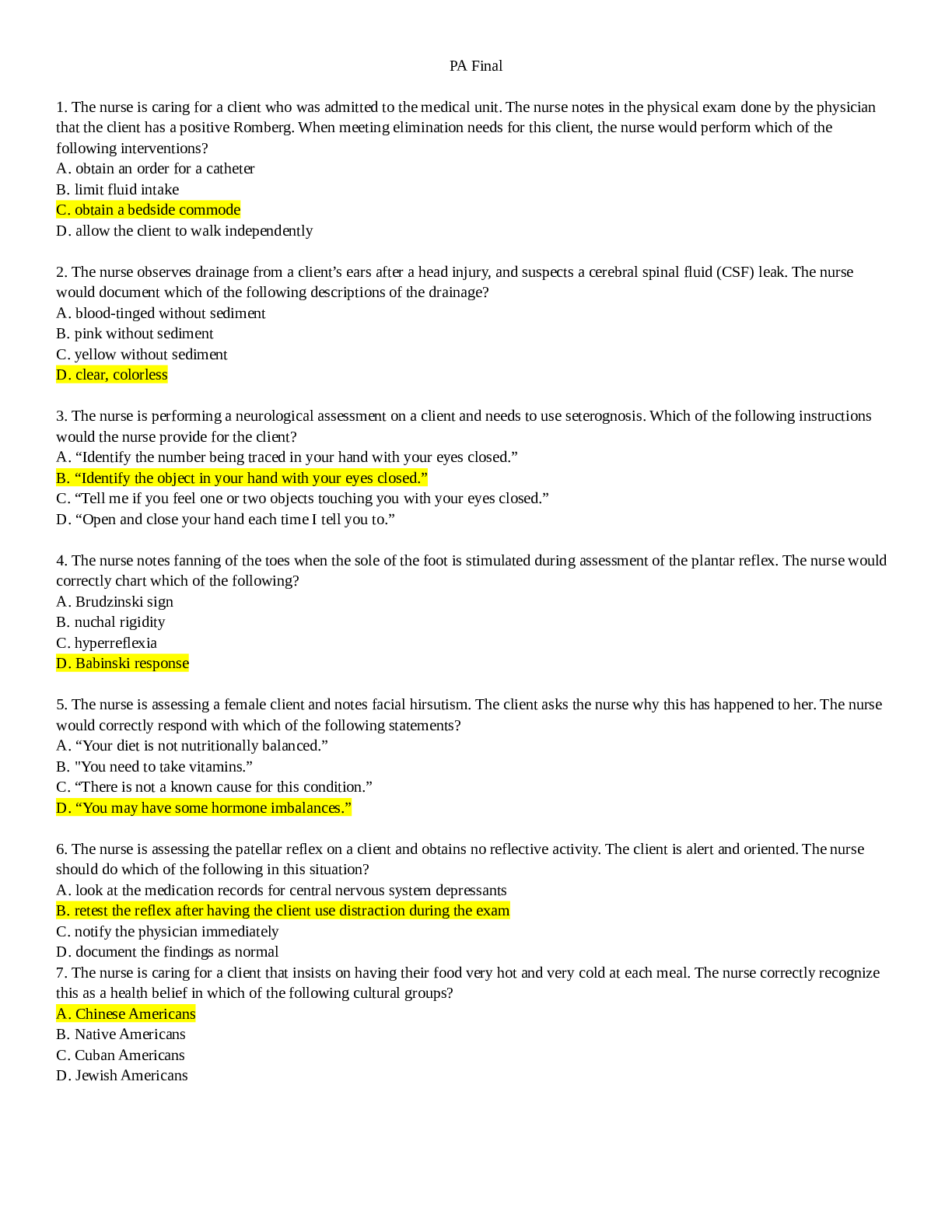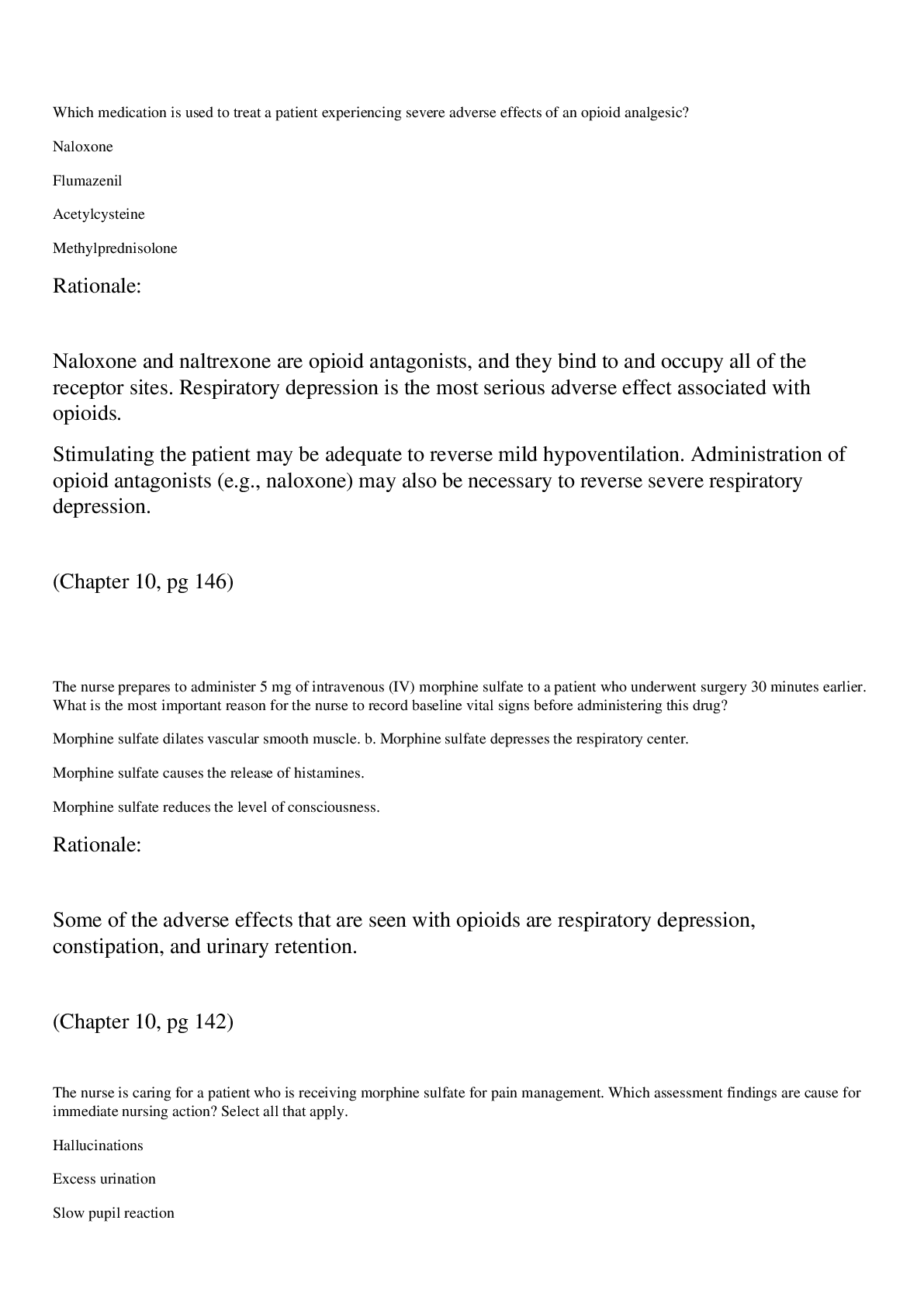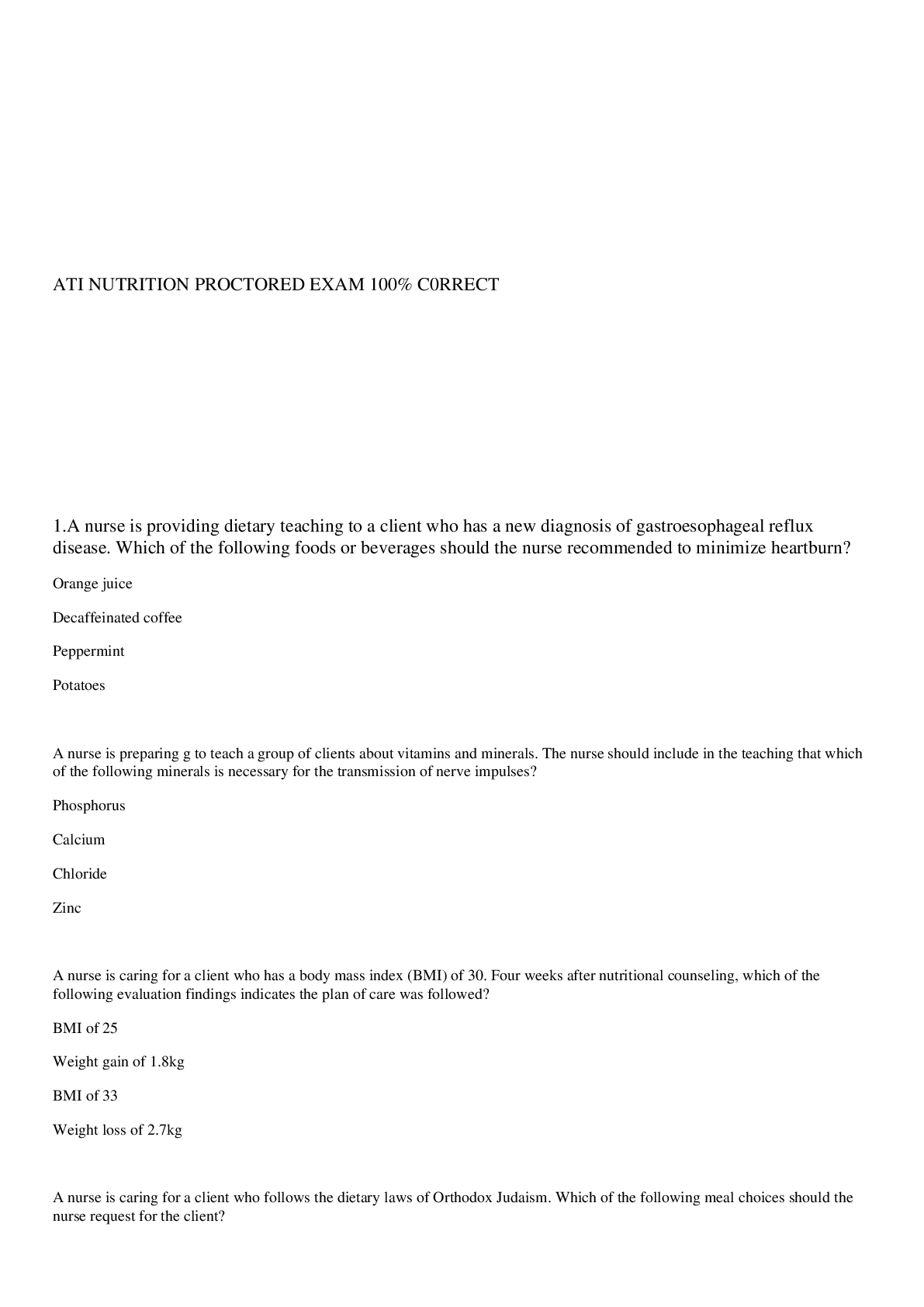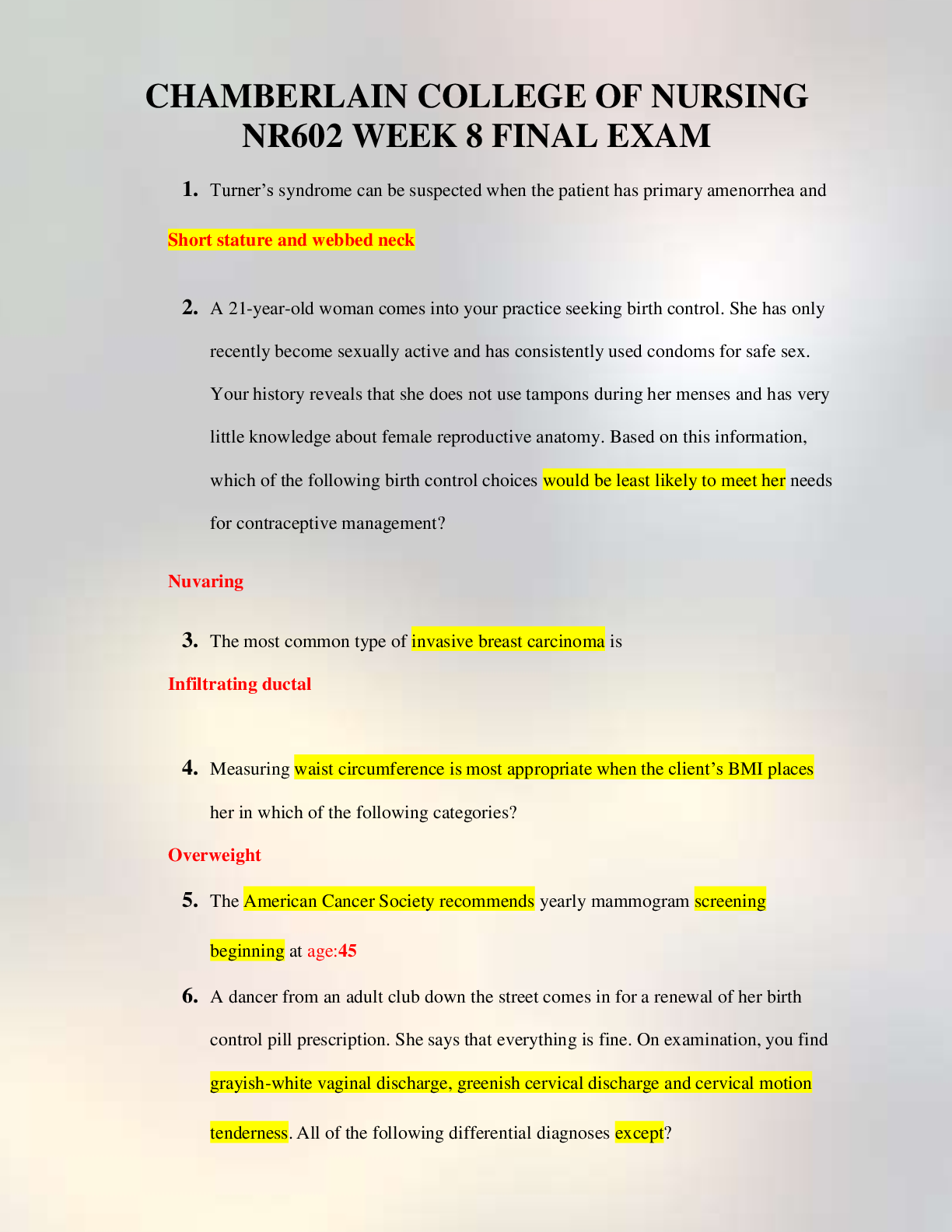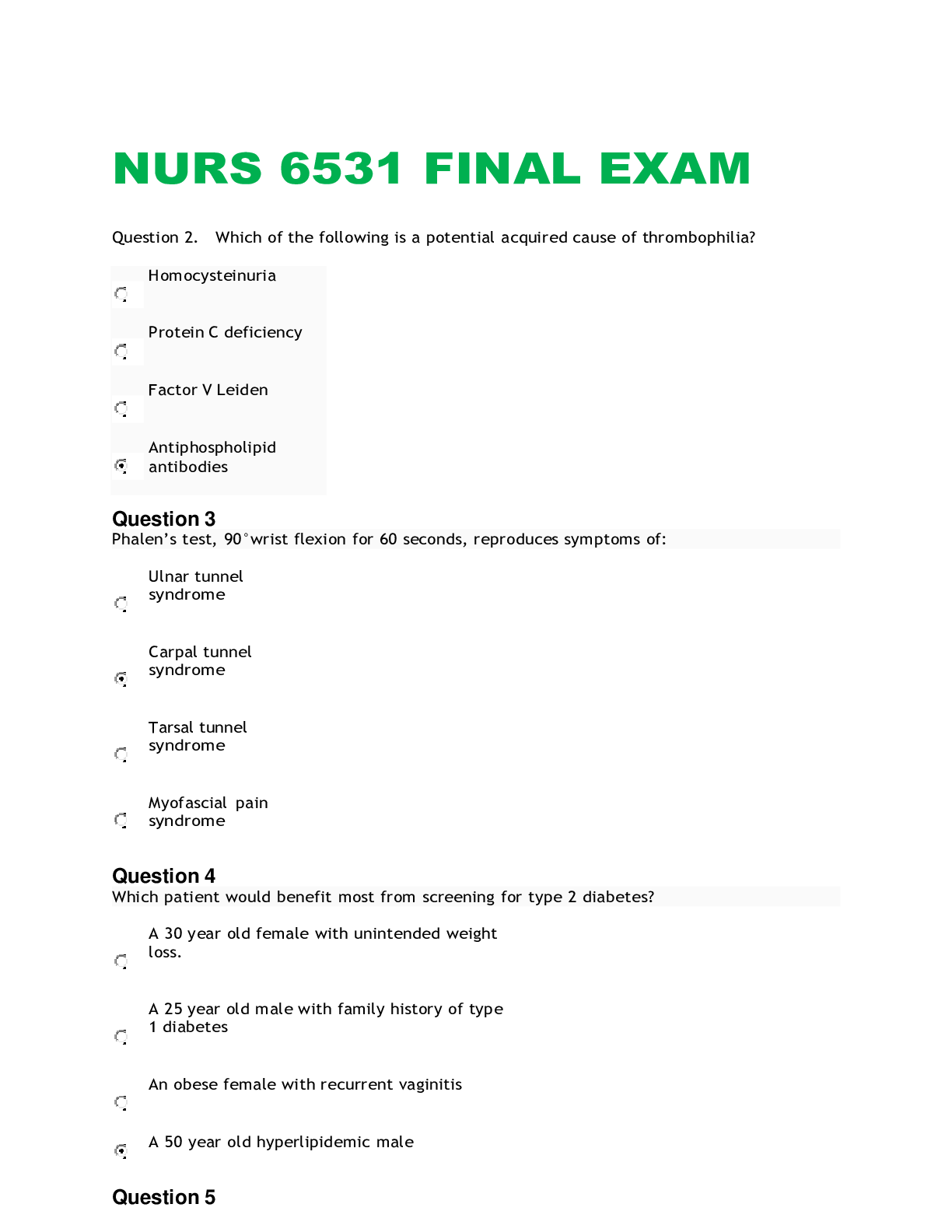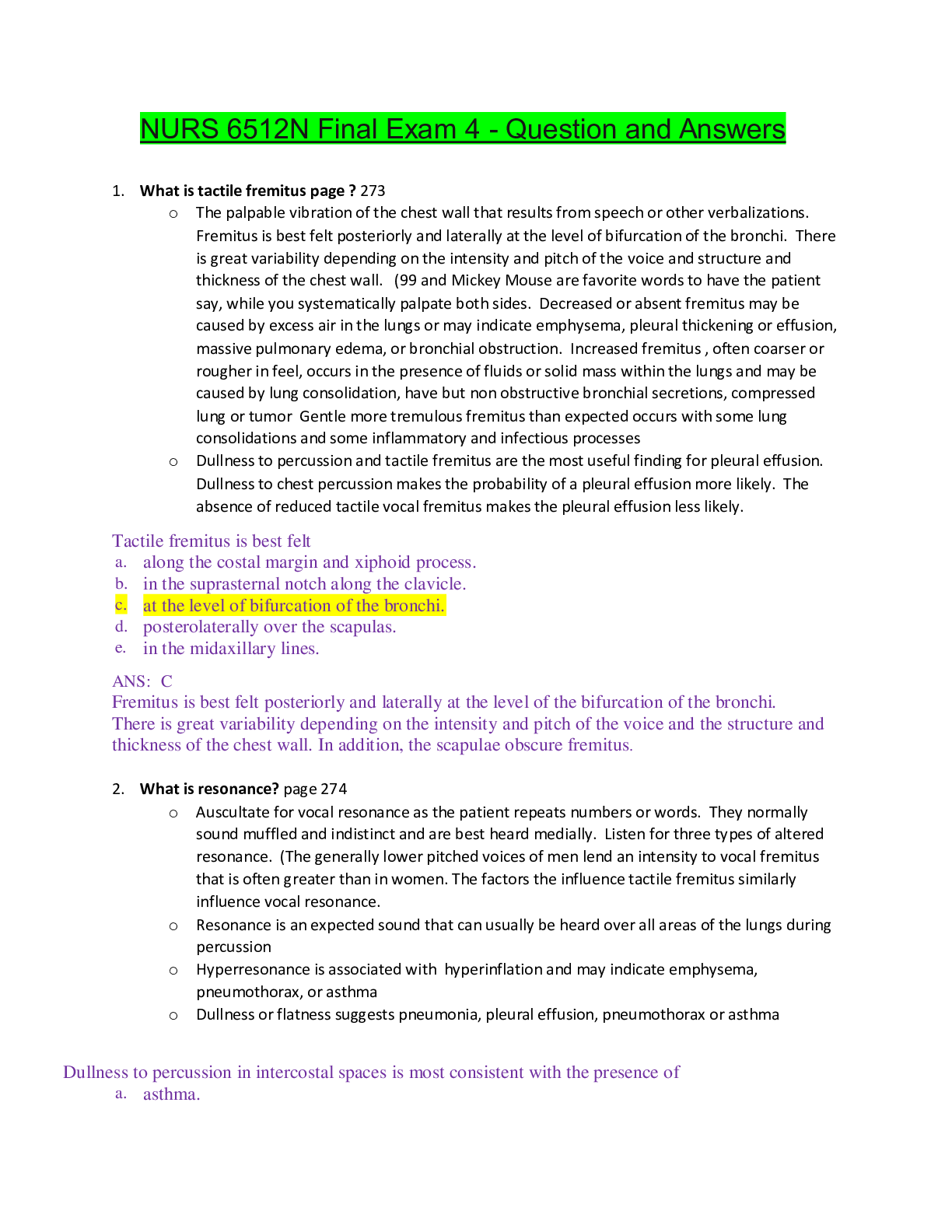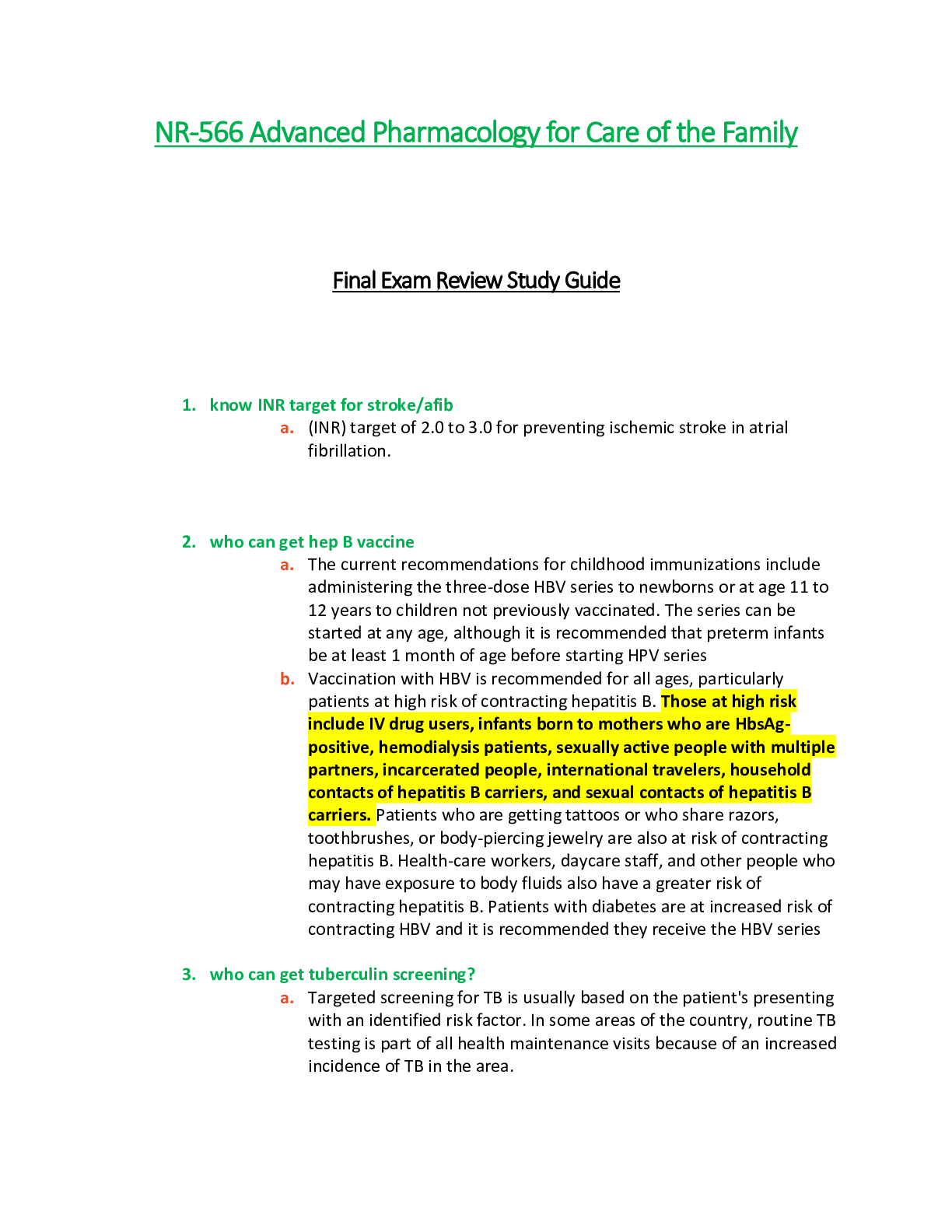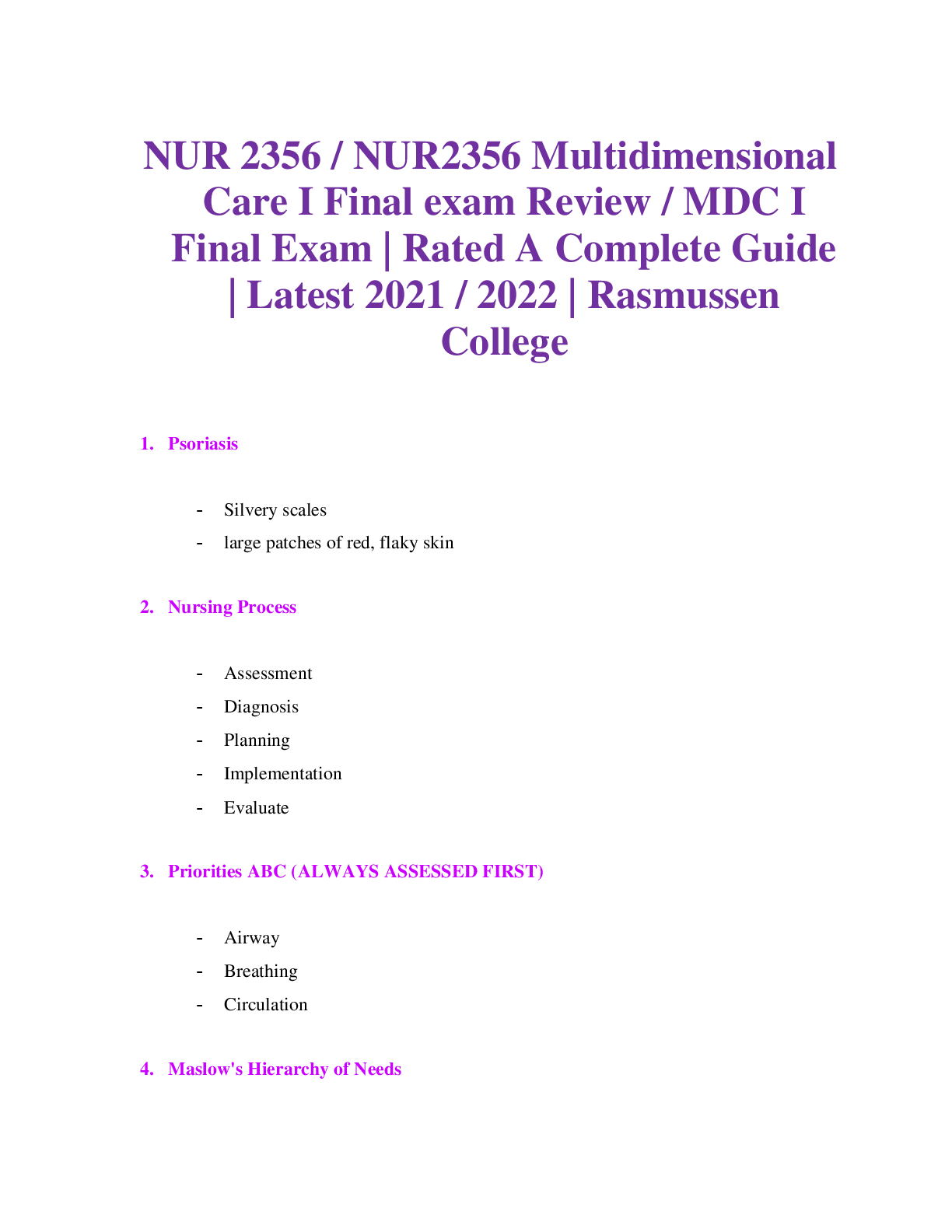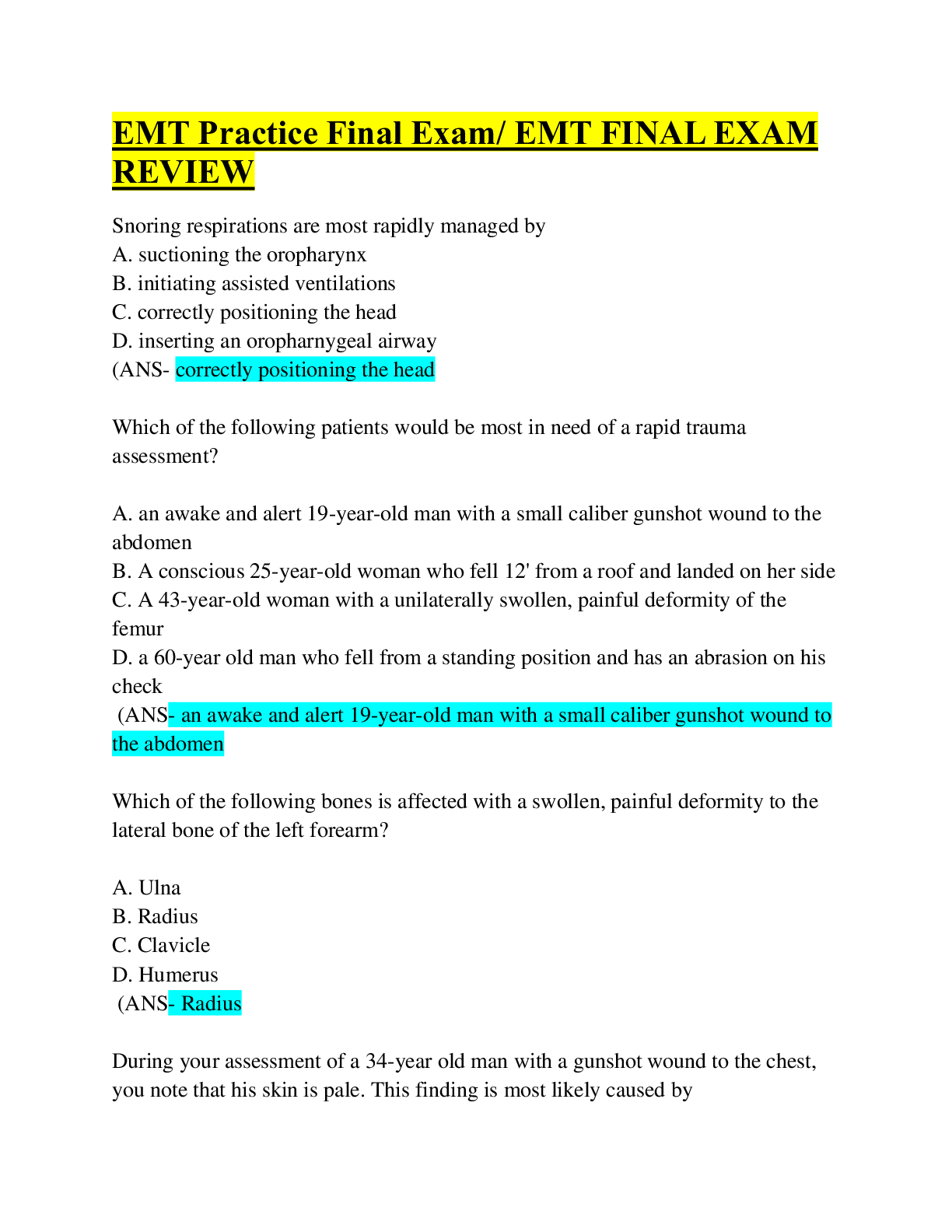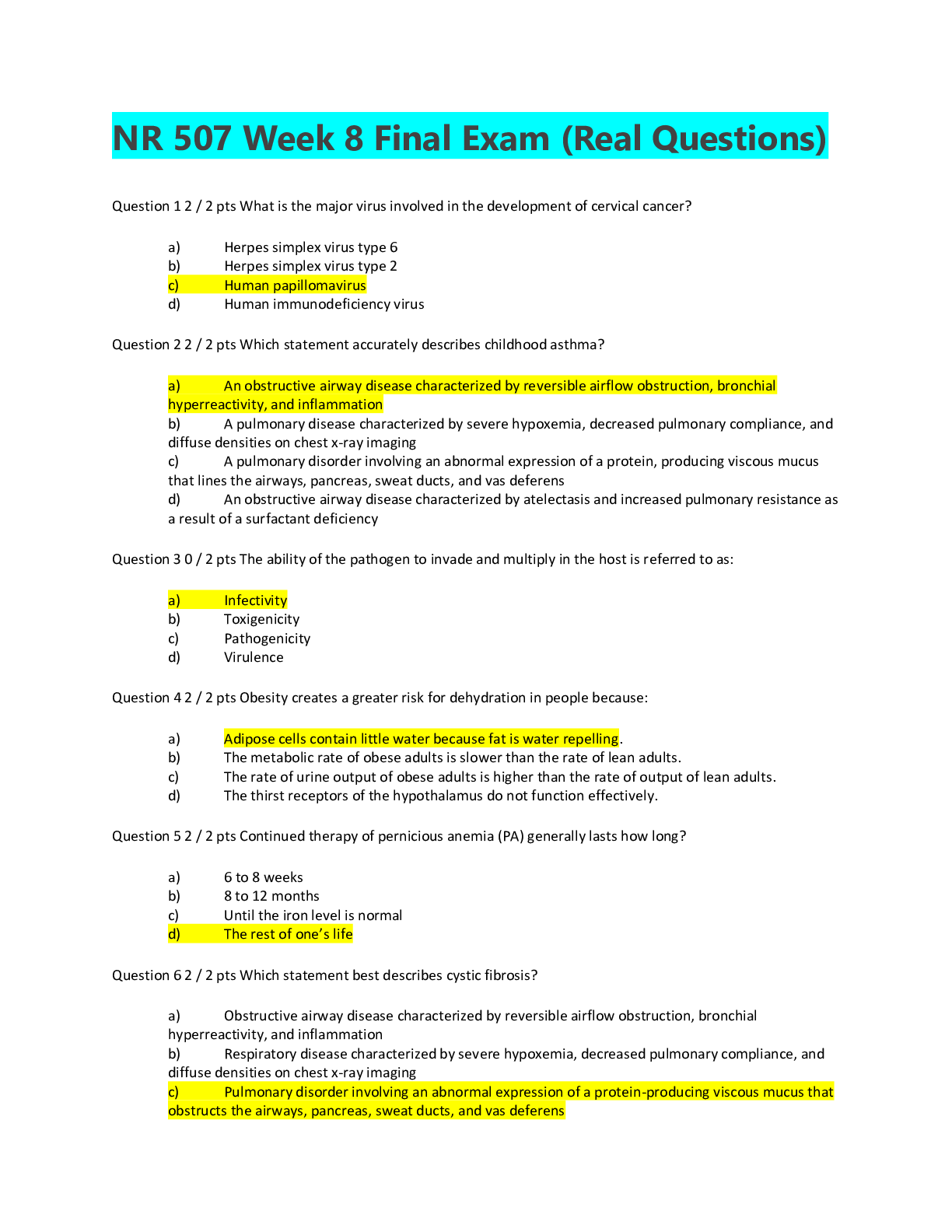*NURSING > Final Exam Review > Chamberlain College of Nursing NR 602 NR Week 8 - Final exam Outline -NEW[2021] (1). (All)
Chamberlain College of Nursing NR 602 NR Week 8 - Final exam Outline -NEW[2021] (1).
Document Content and Description Below
NR 601 Final exam review Weeks 5-8 content Week Topics 5 Dunphy: Chapter 58: Diabetes Mellitus p. 909-938 Kennedy: Chapter 14: Endocrine, Metabolic, and Nutritional Disorders (p.369- 3... 76) Obesity (p. 392-396) Glucose metabolism disorders Types of diabetes (prediabetes, type 1 and type 2) PreDmM = glucose intolerance, Islet cell–specific antibodies, Screening for prediabetes and DM should be considered in all individuals who are overweight or obese, regardless of age, and for all adults aged 45 years and older. Type I - severe insulin deficiency resulting from beta cell destruction, which produces hyperglycemia due to the altered metabolism of lipids, carbohydrates, and proteins Type II - abnormal secretion of insulin, resistance to the action of insulin in the target tissues, and/or an inadequate response at the level of the insulin receptor. Types of diabetes- Two types: Type 1 and Type 2- Improper function of the hormone insulin, secreted by the pancreas. Hyperglycemia is a hallmark sign of diabetes. Prediabetes: Impaired glucose tolerance (IGT) describes a prediabetic state of hyperglycemia where a 2-hour post-glucose load glycemic level is 140 to 199 mg/dL. Type 1 (insulin deficiency)- Presents mostly during childhood. Genetic predisposition plus some sort of environmental trigger. Results in an auto-immune disorder in which the immune system attacks the beta cells of the pancreas to prevent them from producing insulin (decreases production). Inhibits this first step in the insulin pathway. Type 2- Presents mostly during adulthood. Strongly associated with a genetic predisposition. Accompanied with other predisposing conditions, such as obesity or hypertension. Inability of these cells throughout the body to respond to insulin. The pancreas continues to secrete insulin. The cells throughout the body that are unable to adequately respond to it. Miscellaneous Drug-induced diabetes- caused by medications Most commonly occurs with a group of medications that are known as glucocorticoids (steroids) such as in asthma or chrons. Gestational diabetes Presentation: acute, subacute, and asymptomatic Acute: most severe presenting situation and can be life threatening for both type I and type II diabetes. very sick over a relatively short period of time, usually only a couple of days. S/S: nausea, vomiting, and abdominal pain leads to severe dehydration. Confusion or unconscious as a result. In type I diabetes, this is known as diabetic ketoacidosis. 30% of individuals with type I diabetes will initially present before diagnosis. DKA- acidotic due to the production of ketoacids Type 2 diabetes: 2% of individuals hyperosmolar nonketotic state- ketones are not produced. Can occur with either type I or type II diabetes. Subacute: mild to moderate presentation that occurs over a period of weeks to months. S/S: Generally, just not feeling as well. Fatigue, increased thirst, frequent urination, or even weight loss. Most common form of presentation in Type 1 diabetes (70%). Asymptomatic screening tests: Type II diabetes affects nearly 10% of the population. Those with the risk factors of type II diabetes should be routinely screened. Most common means by which type II diabetes is diagnosed. Diagnostic criteria - ADA criteria for diagnosing DM- Random BG >200 (week 5 quiz question) 3 Ps of DM: polyphagia, polydipsia, polyuria (week 5 quiz question) FPG ≥126 mg/dL (7.0 mmol/L). Fasting is defined as no caloric intake for at least 8 hrs 2-h PG ≥200 mg/dL (11.1 mmol/L) during OGTT. The test should be performed as described by the WHO, using a glucose load containing the equivalent of 75-g anhydrous glucose load dissolved in water. A1C ≥6.5% (48 mmol/mol). The test should be performed in a laboratory using a method that is NGSP certified and standardized to the DCCT assay. In a patient with classic s/s of hyperglycemia or hyperglycemic crisis (polyuria, poly dipsia, weight loss), a random plasma glucose ≥200 mg/dL (11.1 mmol/L) Current guidelines for the diagnosis of DM include any one of the following: • Glycosylated hemoglobin (A1C) of 6.5% or higher • Symptoms of diabetes (e.g., polyuria, polydipsia, weight loss) plus a random plasma glucose level of 200 mg/dL or higher • Fasting plasma glucose level of 126 mg/dL or higher (following 8 hours of no caloric intake) • Two-hour plasma glucose level of 200 mg/dL or higher during an oral glucose tolerance test (OGTT) with a 75-g glucose load Diagnostic testing: laboratory tests. The hyperglycemia and the hemoglobin A1C are tested for in the blood to aid in the diagnosis of diabetes mellitus. Hemoglobin A1C: greater than or equal to 6.5% Blood glucose levels: greater than or equal to 200 mg/dL. Random- cannot be used to diagnose pre-diabetes. Fasting- slightly lower, then the level is 126 mg/dL. Two-hour glucose tolerance test Initial treatment recommendations If FPG is above 126, next action: order A1C (week 5 quiz question) Treatment goals for older adults (Kennedy table 14-2) [Show More]
Last updated: 1 year ago
Preview 1 out of 34 pages

Reviews( 0 )
Document information
Connected school, study & course
About the document
Uploaded On
Oct 05, 2021
Number of pages
34
Written in
Additional information
This document has been written for:
Uploaded
Oct 05, 2021
Downloads
1
Views
138

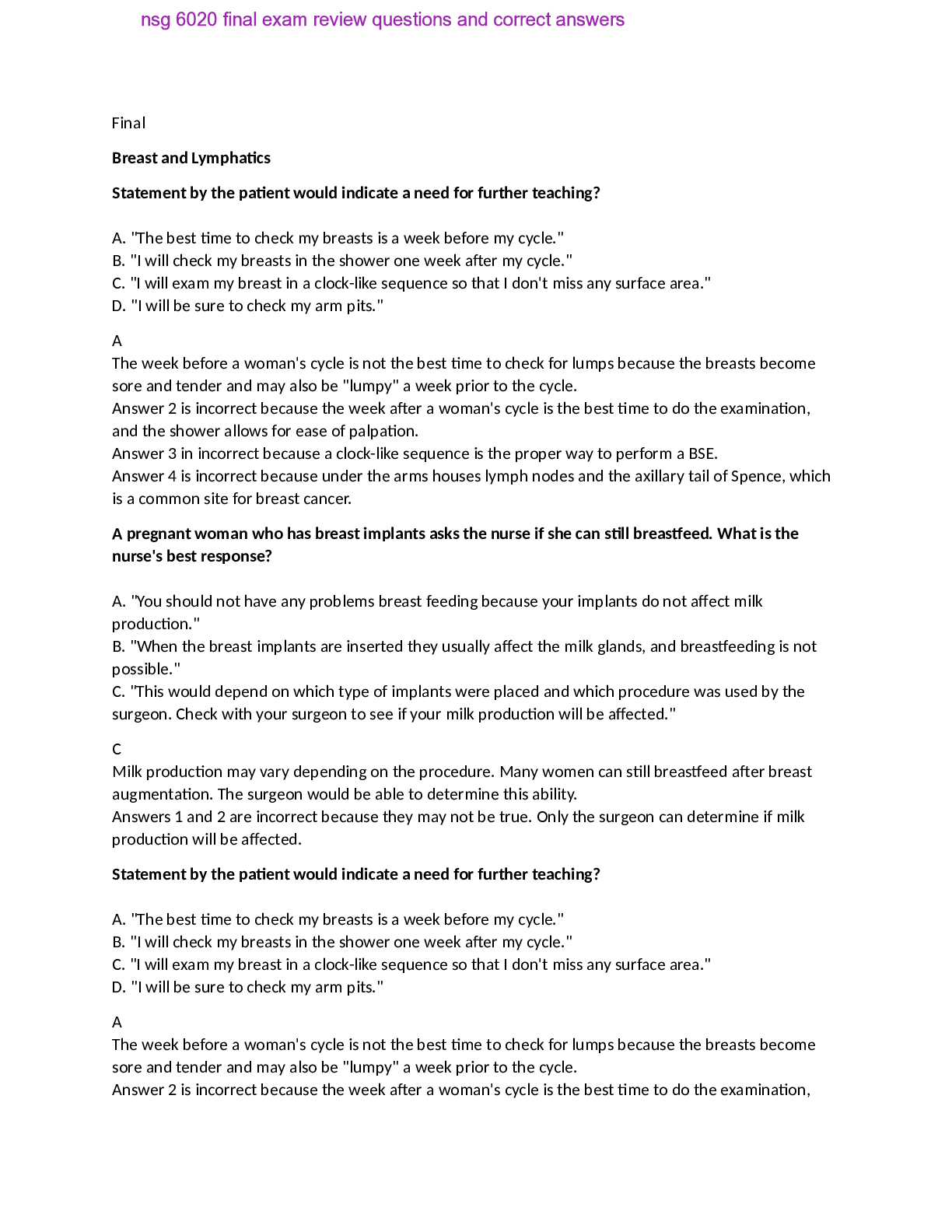

.png)
.png)

.png)
.png)
.png)

